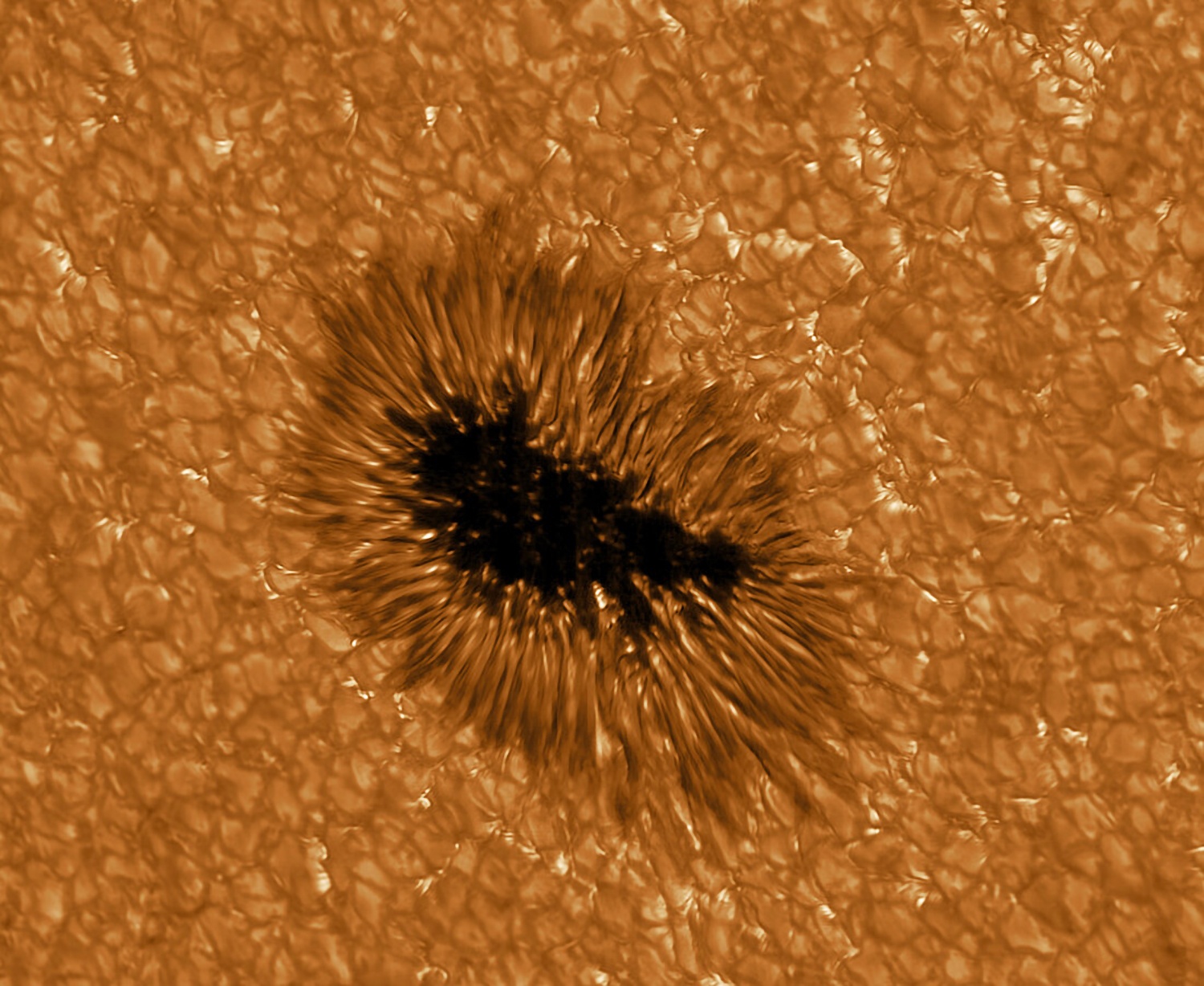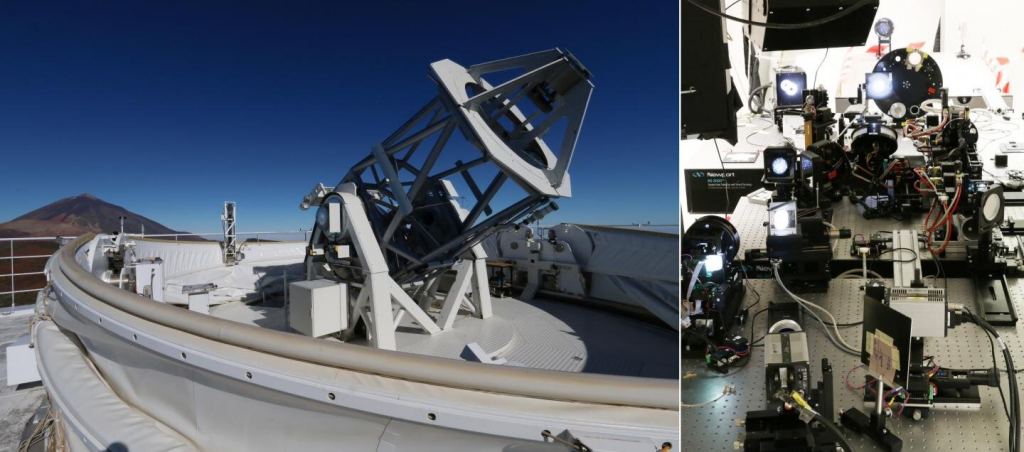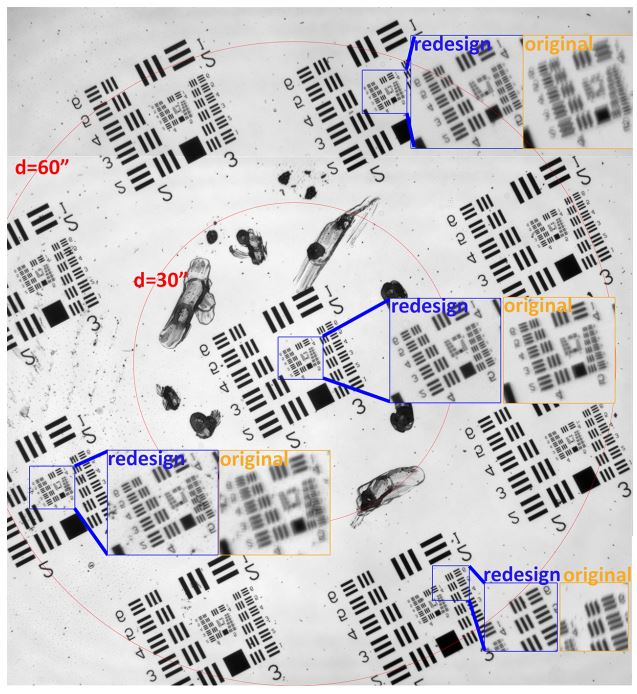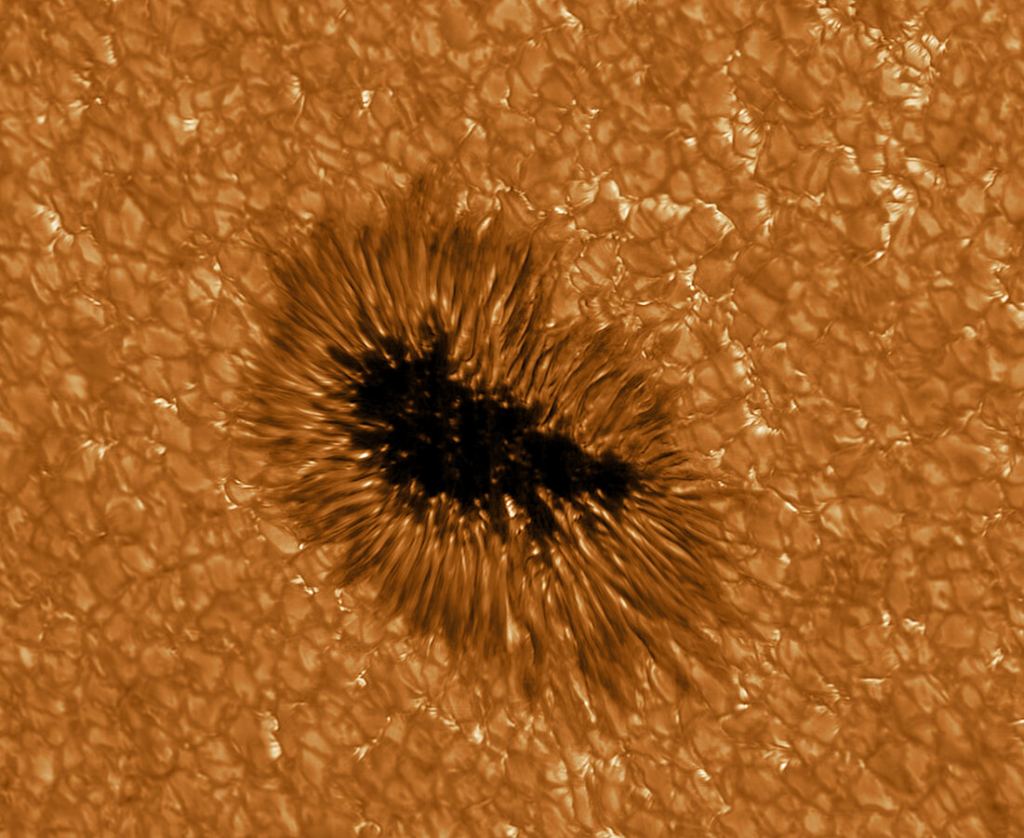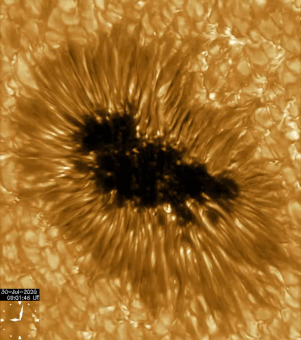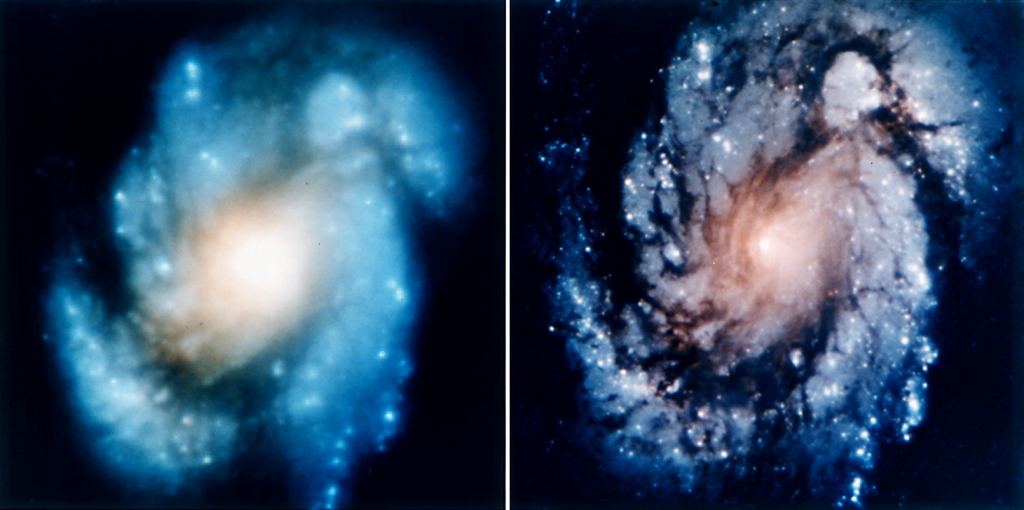I wear glasses for astigmatism. But, as a stargazer with a visual impediment, turns out I'm in good company. The GREGOR telescope, a solar telescope located at the Teide Observatory in the Canary Islands also suffered from an astigmatism that was recently corrected…to very stellar results.
Opened in 2012, GREGOR is part of a new generation of solar (Sun observing) telescopes. Before 2002, solar scopes were quite small in diameter; under one metre. The Sun is close, and VERY bright, so your telescope doesn't need to be as wide as those used for deep-space imaging. GREGOR itself is 1.5m (compare that to some of the largest telescopes imaging distant faint objects like the Keck Observatory at 10m. But without the special filters/optics used by a solar scope, a regular telescope staring at the Sun would be destroyed by the Sun's light). A telescope's power is often related to its ability to magnify. But just like enlarging a low-resolution photo, the more you magnify, the fuzzier the image becomes (that's why those scenes in crime shows where they yell 'enhance!' and a photo grows to reveal a criminal are not realistic). Ultimately, a telescope's diameter provides the higher resolution photo. GREGOR is designed to take those high-resolution images of our local Star. How high resolution? Imagine being able to distinguish a 50km wide feature on the Sun from 140 million km away - basically the same as being able to read the text on a coin from a kilometre away.
But GREGOR had a problem. Scientists noted the telescope was not meeting its theoretical performance limits. Over the last two years, a team led by Dr. Lucia Kleint of the Leibniz Institute for Solar Physics (KIS) worked to upgrade the telescope. The upgrade replaced two mirrors within the telescope. These mirrors were composed of silicon carbide unable to reach the precision polish needed for the best possible clarity – precision within 6nm…literally 1/100,000 the width of a human hair. The new mirrors are made of a material called Zerodur, a lithium aluminum ceramic used in telescopes like Keck. Upgrades also included vibrational dampening of devices such as the mirror coolers that were literally shaking the telescope. Finally, upgrades were made to GREGOR's Adaptive Optics system. Adaptive Optics is like a filter for the atmosphere. Unlike Hubble, and other space-based telescopes that are launched outside of the Earth's atmosphere, ground-based telescopes must see through turbulent air which distorts and bends light. For example, imagine looking at a stone on a riverbed. The stone appears to change shape with the flowing water. A bright reference star is used to measure the blurring effect of the Earth's atmosphere and, in real time, the optics of the telescope adapt to the observed changes in the reference star adjusting mirrors to compensate for the Earth's atmosphere. If a reference star isn't available, a simulated star can be projected into the sky using a laser beam. Since we know the laser should look "perfect", any imperfections in the simulated star can be attributed to the Earth's atmosphere. Adaptive Optics are the next best thing to launching your telescope into space.
The upgrades made an immediate improvement in resolution first shown in these test pattern images used to calibrate the telescope.
Which resulted in this incredible photo of a sunspot on the Sun's surface.
Sunspots like this can be THOUSANDS of kilometres wide – so you're watching the churning and boiling of a field of plasma that could swallow a planet. Sunspots are created by pockets of magnetic activity on the Sun's surface that trap stellar plasma preventing convection. A (relatively) cool region forms which appears darker than the surrounding surface. A spot like this can trigger solar flares and coronal mass ejections.
Here is the same sunspot brought to life in video through the GREGOR telescope.
Solar observation is important. We live in a delicate balance with our closest star. Interactions with "space weather" created by solar activity has caused damage to electrical grids on Earth such as
If repairing a telescope's astigmatic vision sounds familiar, you might be thinking of the Hubble Space Telescope. When launched in 1990, an aberration was detected in Hubble's primary mirror which was polished to an incorrect prescription. A service mission in 1993 literally gave Hubble "glasses" to correct for the defective mirror resulting in a massive improvement in image quality.
So even telescopes, like people, can sometimes suffer from blurry vision. But, through learning, experience, research, and a "redesign" we can see farther and sharper than we've ever imagined bringing both our local stellar neighbourhood and, with the launch of future projects like the James Webb Space Telescope, the distant reaches of the Universe into sharper focus.
READ MORE
Original Press Release by the Leibniz Institute for Solar Physics (KIS)
New high-resolution images of the sun show how terrifying its structure looks up close (CBS)
 Universe Today
Universe Today
